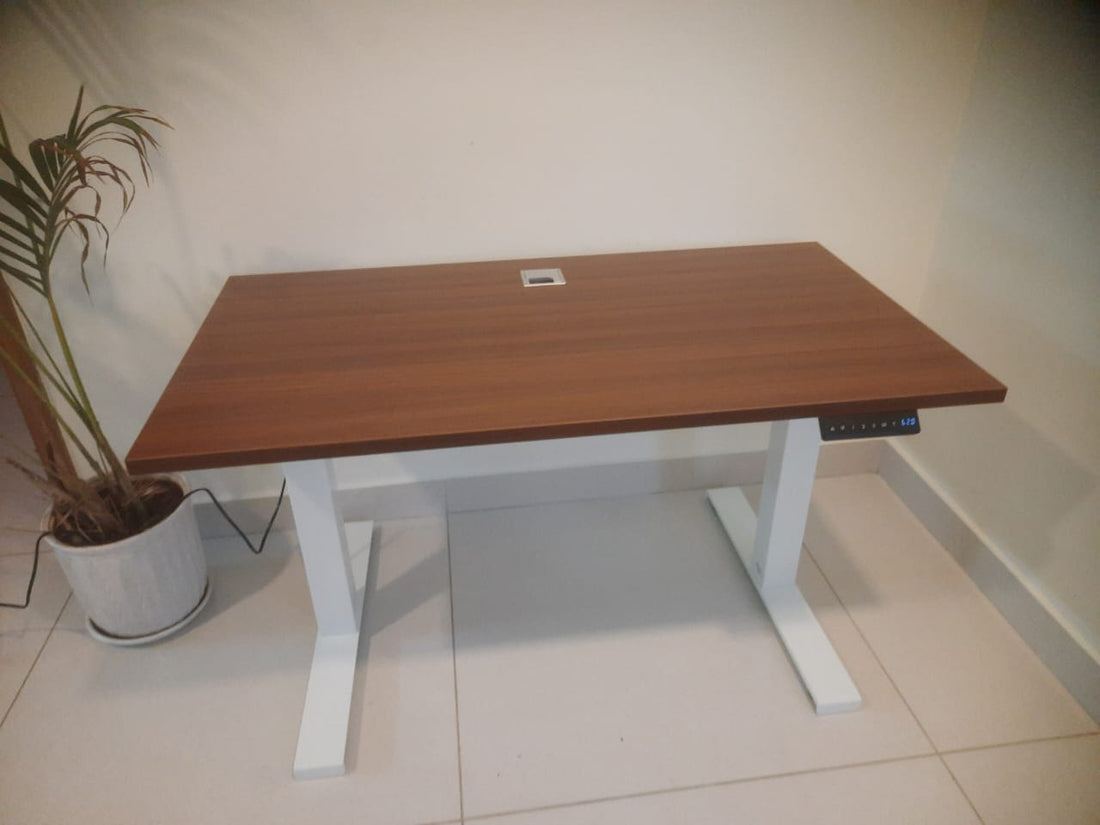
Tips for Transitioning from Sitting to Standing with a Computer Table with Adjustable Height
In today’s digital world, many of us spend long hours at our desks. While traditional desks have their benefits, the rise of height-adjustable computer tables has introduced a more dynamic way of working that boosts both productivity and well-being. Transitioning from sitting to standing can be challenging, but with the right approach, it can be a smooth and comfortable process. This article will provide you with useful tips to help you make this shift and fully enjoy the benefits of standing while you work.
Understanding the Benefits of a Computer Table with Adjustable Height
Before exploring tips for transitioning to a height-adjustable computer table, it’s essential to understand why such an investment is worthwhile. These versatile tables allow you to alternate between sitting and standing throughout the day, which can lead to several significant benefits:
Improved Posture: One of the primary advantages of using a standing workstation is the enhancement of spinal alignment. By promoting better posture, these tables can help reduce back pain and discomfort over time.
Boosted Energy and Focus: Standing while you work can increase blood circulation, which often leads to heightened energy levels and improved concentration. Many users find that they are more alert and engaged when on their feet.
Higher Productivity: The ability to switch between sitting and standing can help combat fatigue. As a result, numerous users report a noticeable increase in their productivity levels when they incorporate standing into their work routine.
Health Benefits: Regularly alternating between sitting and standing can significantly decrease the risks associated with a sedentary lifestyle, such as obesity, diabetes, and heart disease. These conditions are often linked to prolonged periods of sitting, making height-adjustable desks a healthy choice for anyone looking to improve their overall well-being.
Tips for Transitioning from Sitting to Standing
1. Transition Gradually
Transitioning to a standing work routine doesn’t need to be abrupt. Start by incorporating short standing sessions into your day. For example, aim to stand for 15 to 20 minutes each hour. As your body becomes accustomed to the new posture, gradually increase the duration. This approach allows your muscles to adjust comfortably, minimizing the risk of strain.
2. Listen to Your Body
Pay close attention to how your body responds during this transition. If you start to feel discomfort or fatigue, it’s a good idea to take a brief break. Everyone has a different tolerance for standing, so it’s essential to discover what works best for you. Adjust the height of your desk to ensure that your wrists remain straight while typing and that your monitor is at eye level for optimal comfort.
3. Adjust Your Workspace
If you’re using an adjustable desk, proper setup is crucial for comfort. While standing, your wrists should be aligned straight, and your elbows should form a 90-degree angle. To prevent neck strain, make sure your monitor is at eye level. Additionally, keep your feet flat on the floor with slightly bent knees. Proper adjustments can promote better posture and help you avoid discomfort throughout the day.
4. Choose Comfortable Footwear
The right shoes can significantly enhance your standing experience. Opt for supportive footwear that offers good arch support and cushioning. Avoid shoes with minimal support or high heels, as these can lead to fatigue and discomfort over time. If you need to wear formal shoes, consider keeping a pair of comfortable shoes nearby for breaks.
5. Use an Anti-Fatigue Mat
Standing for long periods can cause discomfort in your feet and legs. To alleviate this, consider using an anti-fatigue mat. These mats provide cushioning and support, helping to reduce strain on your legs and feet. They encourage subtle movements, which can improve blood circulation and overall comfort while you work at an adjustable height desk.
6. Incorporate Movement into Your Routine
While standing, make an effort to move around regularly. Shift your weight from one foot to the other, stretch briefly, or engage in simple exercises. This light activity can help counteract fatigue and enhance circulation, making it easier to stand for longer periods. Simple stretches or a quick walk around your workspace can make a significant difference in your overall comfort and productivity.
7. Change Positions Frequently
To maximize the benefits of an adjustable desk, it’s essential to alternate between sitting and standing regularly. Experts recommend changing your posture every 30 to 60 minutes. To help you stay on track, consider using a timer or setting reminders on your phone. This practice will help you avoid stiffness and maintain your energy levels throughout the workday.
8. Create a Comfortable Workspace
The ergonomic setup of your office plays a significant role in how comfortable you feel while standing. Ensure that your keyboard, mouse, and monitor are positioned correctly. Your keyboard and mouse should be placed so that your elbows remain at a 90-degree angle, and your monitor should be at eye level. Keep frequently used items within easy reach to minimize strain.
Conclusion
Switching to an adjustable-height computer table can greatly enhance your work experience by encouraging better posture, boosting energy levels, and providing various health benefits. To smoothly transition from sitting to standing, keep these tips in mind and pay attention to your body’s signals. This change not only offers a chance to cultivate a more vibrant and interactive workspace but also paves the way for improved productivity and a healthier lifestyle.
